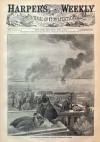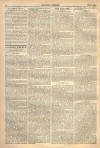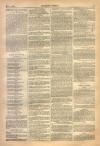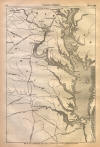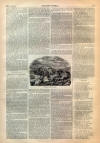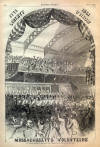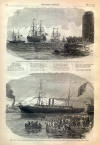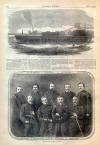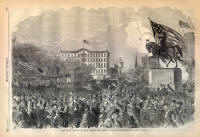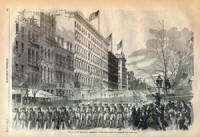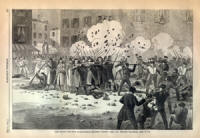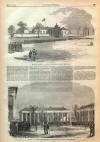New York Governor's Island
|
|
This Site:
|
MAY 4, 1861. HARPER'S WEEKLY. 285 RECRUITS DRILLING IN SQUADS ON GOVERNOR'S ISLAND, NEW YORK.largest vessel of which keel has yet been laid. Her huge proportions rose up like a mountain of iron as seen from the bed of the basin. Her beam spreading over so much ground adds to her colossal appearance. If she were so placed upon the level of the ground, where her outlining could stand in greater relief against the surrounding objects, her form would present a spectacle such as never has been witnessed on the shores of the Hudson River. Notwithstanding her great size, she will draw but a light amount of water ; and, when completed, the front of the dock and copper dam can be easily removed, and the vessel floated out by the water, which will rush in and fill the dock where she now lies. The stern of the vessel is within a few yards of the river, the ingress of which is prevented by the means of a strong coffer dam. Heavy timber props rest against it to prevent its being forced in by any undue pressure. Following along the bottom of the dock, then mounting the staging, one enters the cave or tunnel into which the bow of the vessel penetrates about 100 feet. The excavation runs under the sidewalk in the street, and shelters the bow of the vessel from the weather. THE HULL.The hull of the vessel is built of iron plates, about three-fourths of an inch in thickness, nearly eight feet in length, and about two feet in width. These are fastened together by rivets placed at about the distance of an inch and a half from each other. The rivets below the water-line are smooth-headed, so that they will offer no resistance to the vessel's progress through the water, while those above the water-mark protrude from the vessel's side over a half inch, terminating in a sharp point. Eight is the average number of plates in depth below the water-line. The work has progessed only so far as that both forward and aft there are but two plates above the water-line ; but amid ships, or in the centre of the vessel, the number has increased to seven, extending only as far as the engine-room. The interior of the vessel presents a very forcible impression as regards her strength. At intervals of about two feet rise up very, large L shaped bars of iron, which are the ship's ribs; two of these constitute a rib, and from the rivet holes in them it would seem that more plates are yet to be added. This is evident when we remember that she was built on the principle of having a series of plates riveted together so that spaces should intervene between each of them. The bow is very sharp, and there are good evidences that she was intended to be fortified in this locality by what is termed dead wood but in this case it would be dead iron. Passing. along_ aft, and on reaching the beam, or broadest part of the vessel, we find that upright stanchions or bearers have been erected. These are arranged by pairs, and are intersected by the lower-deck floor-beams, forming, as it were, two crosses joined at the transverse ends. These beams are built of heavy plate-iron, firmly united together. A portion of the deck has been laid, on which is placed her engines, which are of a novel pattern, but so dismembered that full description of them can not be given. PRESENT ARMAMENT OF THE BATTERY.It is said, when completed, there will be nine shells of plates of iron, with space between, making a wall twenty. seven inches in thickness. Being sharp at the bow, she can be used for cutting a, vessel in two. She was designed to carry thirty guns of the heaviest calibre on her gun-deck, and mount four Paixhan guns on her spar deck, and furnaces for heating red-hot shot were to be placed in different parts of the ship. This built, she would prove a valuable acquisition to our harbor defenses. She will have no masts, and will probably be about 6000 tons burden. PARADE OF UNITED STATES TROOPS ON GOVERNOR'S ISLAND. BEFORE EMBARKATION.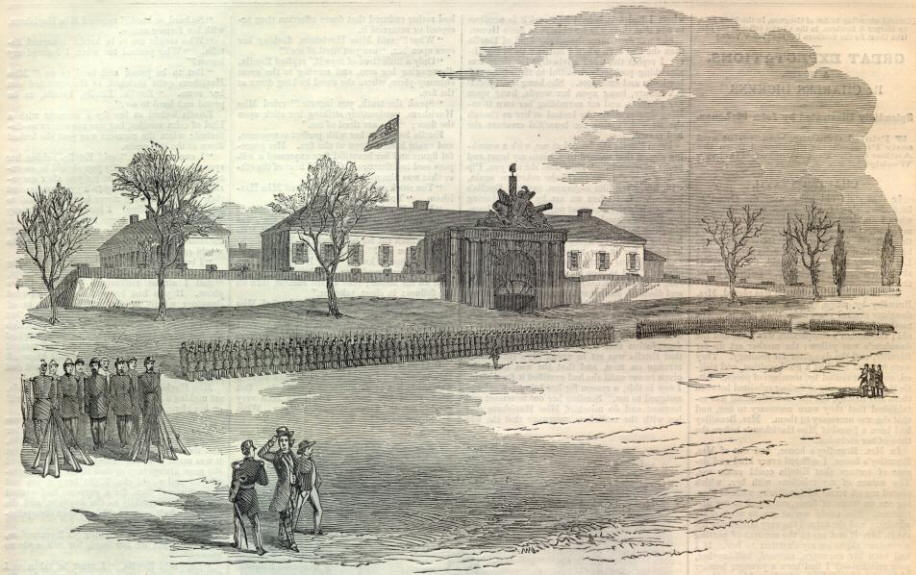 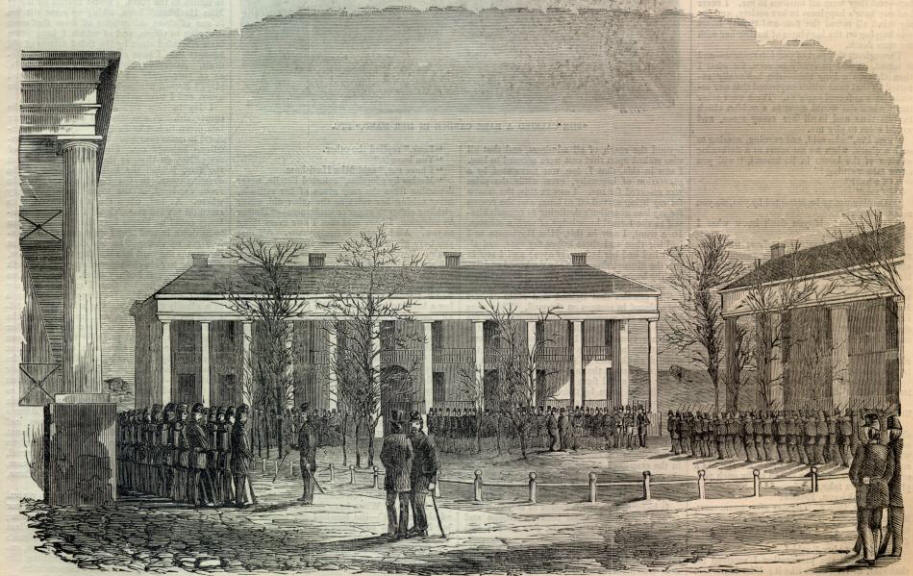 |
|||||||||||||||||||||||||||
|
|
||
|
|
Site Copyright 2003-2018 Son of the South. For Questions or comments about this collection, contact: paul@sonofthesouth.net |
|
|
Are you Scared and Confused? Read My Snake Story, a story of hope and encouragement, to help you face your fears. |
||
